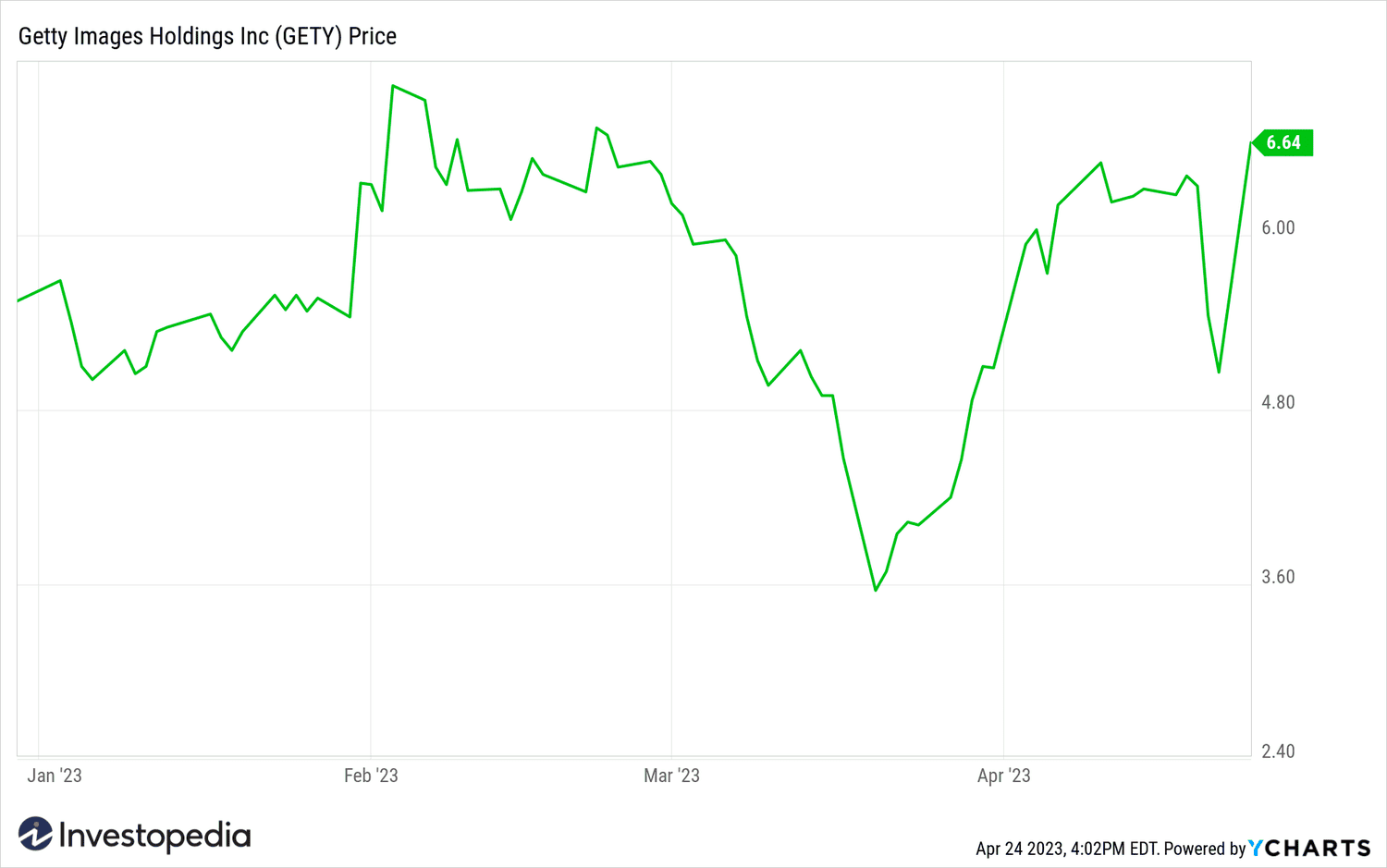In the realm of visual content, it has always been a special place. I still recall my first encounter with their vast collection while searching for an image to include in my college project. It felt like discovering an abundant trove of creativity and sentiments all at once.With millions of pictures available online,
Getty Images is not just an online portal; it is a gateway for visual storytelling. For artists, marketers and ordinary users alike, these illustrations serve as ideal depictions that help them communicate various messages or concepts they may want to express.
Understanding the Market Value of Getty Images
To really determine the market value of
Getty images, it is necessary to go beyond mere figures. This platform has evolved into a massive player within stock photography, and it is worth billions; but what exactly accounts for this estimation? It is not only the amount of images that contribute to this but also their quality, individuality and emotional triggers.
Assessments of worth may be made through:- Brand Reputation: Getty Images has built a strong brand that is recognized worldwide.
- Quality of Content: The platform hosts high-resolution, professional images that cater to diverse needs.
- Market Demand: With businesses increasingly relying on visual content for marketing, the demand for quality images continues to rise.
Moreover, partnerships with well-known photographers and artists increase the uniqueness of its products which in turn strengthen its standing in the marketplace.
Factors Influencing Getty Images' Worth
The value of
Getty Images is affected by a number of circumstances and familiarizing oneself with these can give a glimpse into its market intricacies. Some of the critical elements include:
- Technological Advancements: With the rise of AI and machine learning, the way images are created, curated, and searched is evolving rapidly. Getty Images has adapted well, integrating these technologies to enhance user experience.
- Market Competition: The stock photo industry is flooded with competitors. However, Getty Images has carved a niche by focusing on high-quality content and licensing options that meet diverse user needs.
- Consumer Behavior: As businesses increasingly invest in digital marketing, the demand for compelling visuals has skyrocketed. This shift directly impacts Getty Images' valuation.
- Licensing Models: The flexibility of its licensing models allows Getty to cater to both small businesses and large corporations, broadening its user base and revenue streams.
When you take a closer look at these factors, you will see that there is a rather intricate yet captivating picture of how much
Getty Images is worth today. In fact, it goes beyond just the images but rather revolves around how they are perceived by individuals as well as businesses.
Comparing Getty Images with Other Stock Photo Services
Getty Images is on top of its game in comparison to competitors. Just like me, I have experienced various platforms and know the minor distinctions which influence users.
Getty Images may provide fewer choices but the quality is just superior unlike sites such as Shutterstock or Adobe Stock.A rapid overview of a few well-known stock image services is shown here:
| Feature | Getty Images | Shutterstock | Adobe Stock |
|---|
| Image Quality | High | Moderate to High | High |
| Exclusivity | Yes | No | Yes |
| Licensing Options | Flexible | Standard | Flexible |
| User Experience | Intuitive | Good | Excellent |
In my opinionated expertise, it tends to be the case that when I needed a special image for a blog post dear to my heart, Getty Images gave me a bit of authenticity, which is something that other agencies are missing. Their selective image sets usually speak to feelings below the surface and this is very important in relation to genuine storytelling. However, one should note that although affordability may deter some individuals from purchasing their products; it would not be surprising if they made huge investments with them in search for visual prints that are worth it all.
Impact of Technology on Getty Images' Value
The technology is in the heart of the image nowadays and its effects on Getty Images cannot be overemphasized. From AI-driven search algorithms to innovative editing tools, technology shapes how we create, share, and consume images. I remember my first experience using an AI feature within their system to find photos that expressed exactly what I felt at that time; it was like having a personal assistant, with amazing outcomes.
The main technological advancements that are affecting Getty Images include:- Artificial Intelligence: AI helps in tagging and organizing millions of images, making the search process seamless and efficient.
- Mobile Accessibility: With the rise of smartphones, Getty Images has optimized its platform for mobile users, allowing easy access to high-quality images on the go.
- Data Analytics: Analyzing user behavior helps Getty understand trends and preferences, allowing them to curate content that aligns with current demands.
Such improvements improve the user’s experience and maintain the competitive advantage of Getty Images in the industry. At the heart of this platform lies a dynamic relationship between creativity and technology.
Recent Trends in the Stock Image Industry
The stock picture sector is experiencing an interesting change, owing to alterations in customer behavior as well as technological improvements. Based on my personal encounters I have figured out that there is movement towards synthesized images bearing social evidences. The previous days when some artificial studio-based photos used to be on top are gone forever. In our present day and time reality is what people want that is why stock sites have changed so much.
This contains something notable of an inclination in;- Diversity and Inclusion: There is a growing demand for images that reflect diversity in race, gender, and culture, making it essential for platforms to provide a more inclusive range of visuals.
- Authentic Imagery: Consumers are increasingly favoring candid shots that tell a story, steering away from traditional posed photographs.
- Sustainable Practices: As awareness of environmental issues rises, many platforms are focusing on sustainability, featuring eco-friendly themes and practices in their imagery.
- Video Content: The inclusion of video clips alongside images is gaining popularity, allowing brands to create richer narratives.
The significance adapting to remain relevant is underlined by these patterns that reflect changing client demands. While starting out, I feel that this movement toward genuine and human interaction adds depth to image based narrative.
Expert Opinions on Getty Images' Market Position
The valuable viewpoint of market specialists makes it easier to recognize where exactly is Getty Images. I tend to read articles and interviews with photographers and market analysts to discover their opinions about this behemoth of stock photography. Their comments reveal not only strengths of the company but also indicate directions for growth.
A large number of professionals concur that Getty Images is still a keystone player because of factors such as:- Rich Heritage: Founded in 1995, Getty Images has built a legacy of quality and trust, making it a preferred choice for professionals worldwide.
- Curated Content: Unlike many platforms that focus on volume, Getty emphasizes curation, ensuring that each image meets high standards. This curated approach resonates well with marketers who seek impactful visuals.
- Strategic Partnerships: Collaborations with well-known photographers and artists have bolstered their portfolio, adding unique value that sets them apart.
However, some analysts warn against complacency. They stress the necessity for Getty Images to perpetually innovate, especially in reaction to the increasing rivalry from other, more advanced technological platforms. In my opinion, upholding their heritage while at the same time adapting to contemporary trends is crucial for them to succeed indefinitely.
Frequently Asked Questions
In line with every well-known service, there are users who always have questions regarding Getty Images. During my research, here are some questions which I have come across more often than not:
What types of images does Getty offer?
- Getty provides a vast collection, including editorial, creative, and archival images.
Are the images free to use?
- Most images require a licensing fee, but Getty offers various pricing models to suit different needs.
How do I find the right image?
- Their advanced search features allow users to filter by categories, themes, and even colors.
Can I use Getty Images for commercial purposes?
- Yes, but ensure you select the appropriate licensing option for your intended use.
These questions exemplify typical user worries as well as emphasizing the need to comprehend licensure and usage rights. From what I have seen, doing just a bit of research can make all the difference when it comes to making an informed decision.
Conclusion on Getty Images' Market Value
The stock photo industry is different because of how Getty Images have come to merge together quality and creativity. I have discovered from my own experience that there are so many images available as well as unforgettable tales they tell about. Unsurprisingly Then, Getty's dedication to offering great pictures to choose from is what makes it an important source of design for people who want powerful visuals.Although competitors pose significant threats to the stability of Getty Images as a market leader, its strong ancestry in the industry and its commitment towards quality have been major contributing factors to the continued availability of this service. As the industry evolves over time adaptive capacity becomes key. For both creatives and businesses at large Getty Images remains a storehouse of sorts; making sure our visual narratives are taken care off despite changes taking place all around us.

 admin
admin








